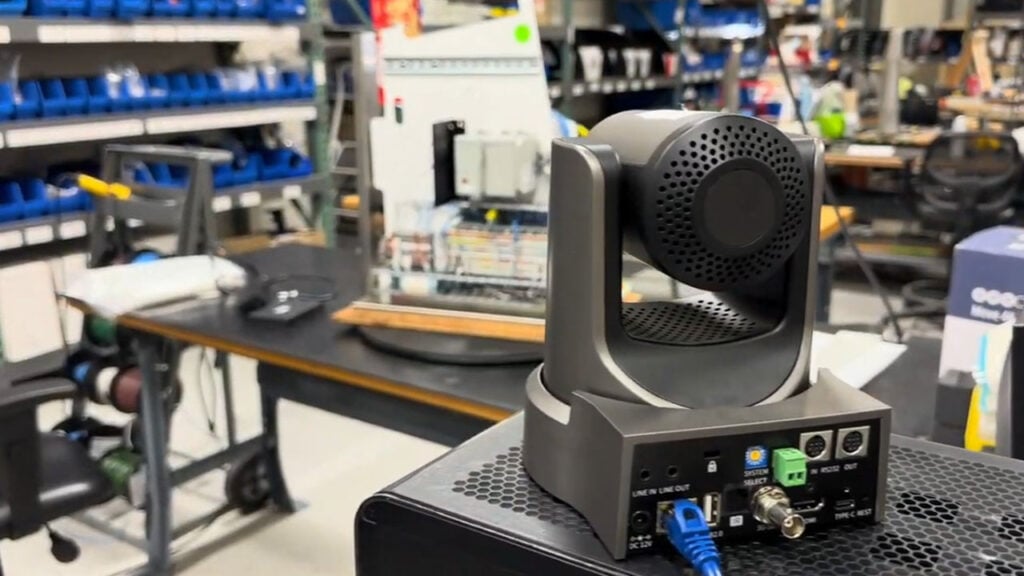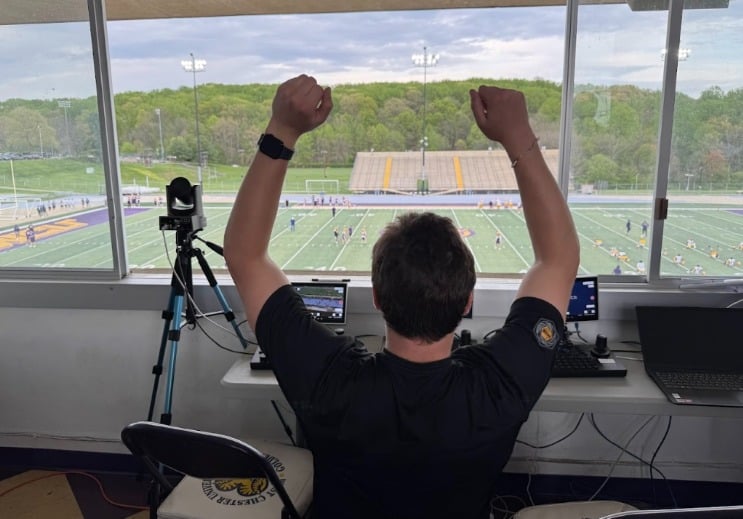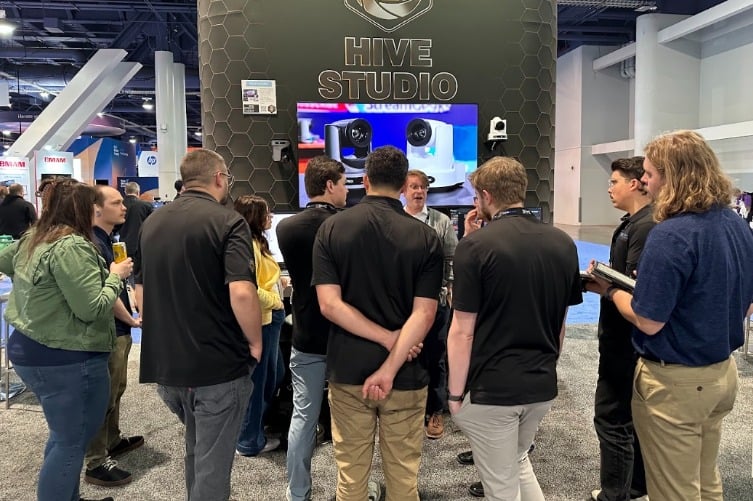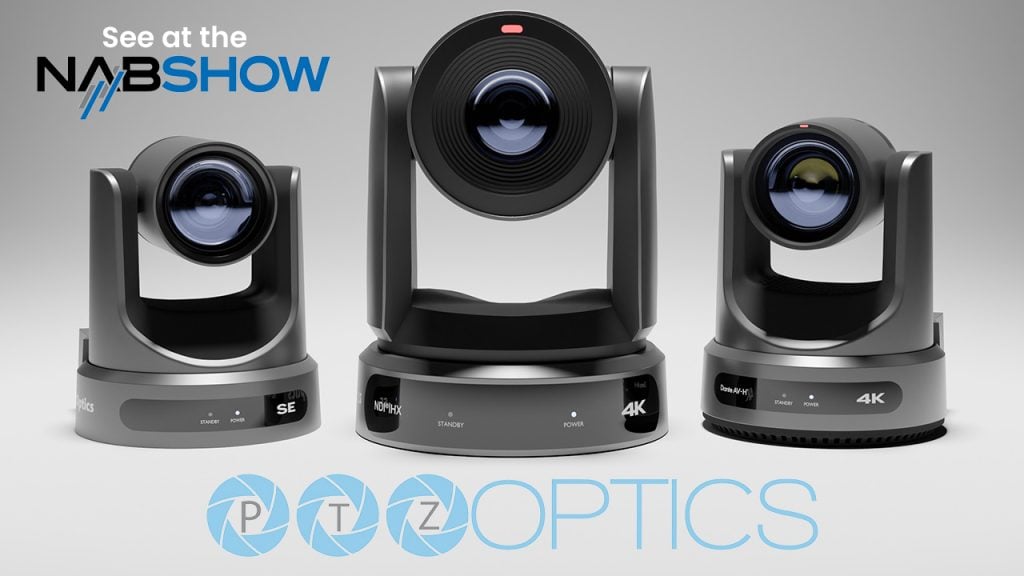In-Depth Review: PTZOptics Studio Pro vs DSLR for Live Streaming and Video Production
Written by Paul Richards on July 19, 2023
Camera choice matters. A lot. It can make or break your live streams and video production. Today, we’re checking out the PTZOptics Studio Pro and the SONY EV-10 cameras. Both are great, but which one is best for live streaming and video production? Let’s find out.
PTZOptics Studio Pro Overview
Enter the PTZOptics Studio Pro. Compact yet powerful, this camera is shaking up the live streaming and video production game. It’s got a 1/2.8-inch CMOS sensor, integrated 12X optical zoom, and it’s all about options with HDMI, USB, and NDI video.
Ease of use? Check. Reliability? Check. This camera does not have hundreds of settings and menus like a normal DSLR because it’s not made for photography or on-the-go vlogging. And did we mention it won’t overheat during those epic, long-format interviews or podcasts? Plus, it comes with an included LED light panel to create really great videos in almost any close-up scene. But let’s be honest: while it’s awesome, its sensor size and video resolution may not go toe-to-toe with the big guns of the SONY EV-10.
SONY EV-10 Overview
Now, let’s talk DSLRs. They’re known for superior video quality and flexibility. Take the Sony ZVE-10, for example. It’s got a 23.5 x 15.6 mm APS-C CMOS sensor and records in 4K30 resolution.
People love DSLRs for their sharp resolution, dynamic range, and jaw-dropping color reproduction. And that flip-out touchscreen is a really great feature. So easy. All of that is great for photography and vlogging but when used for live streaming it can overheat, and getting everything set up might take a bit of time.
If you connect your SONY EV-10 to the USB of your computer you will get 1280x720p video. The benefit is that you do not need a capture card. If you connect the SONY EV-10 to an HDMI capture device you can get up to 4K video and still be able to bring it into your live streaming software such as OBS or vMix.
Comparing the two cameras
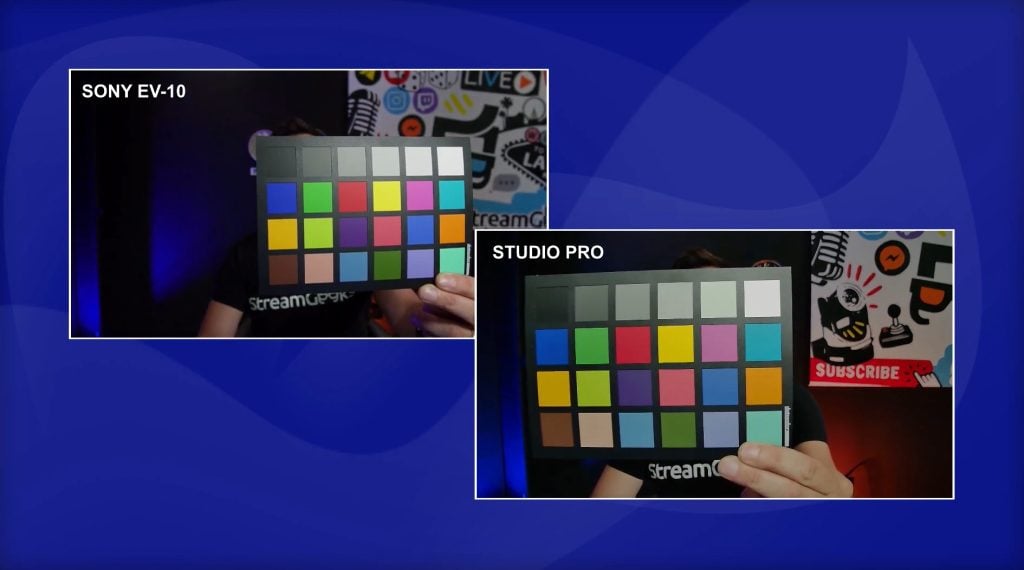
SONY EV-10 vs PTZOptics Studio Pro
Now, for the good stuff. Let’s put these two head to head.
Video Quality: Studio Pro gives you 1080p60/50. But DSLRs often go higher, reaching 4K30 in some models.
Low Light Performance: DSLRs win here with their larger sensor. The Studio Pro, however, was made for controlled lighting environments and even comes with a light which can be powered by the camera. So our test results, show that most live production environments will have similar results.
Color Reproduction: DSLRs take the cake for color reproduction and dynamic range. They just have larger sensors and better processing.
Bokeh & Depth of Field: With interchangeable lenses, DSLRs can create beautiful bokeh. But don’t count the Studio Pro out – its time-of-flight focus feature also delivers super fast focus and can create Bokeh when set up properly.
Overheating and Runtime: The Studio Pro wins here. No overheating and it’s made for those long, continuous recordings.
Making the Choice
So, which one do you pick? That all depends on your goals. If you’re going for long recordings without heat issues or just want something simple to use, the Studio Pro has got your back. But if you’re after high-res videos and great low-light performance, then a DSLR might be your new best friend. Just keep in mind that it has a bit of a learning curve and might overheat after a while.
When it comes to live streaming or video production, the versatility of your video outputs can play a pivotal role in your setup. The PTZOptics Studio Pro and DSLR cameras offer different, yet complementary options for outputting video. The Studio Pro provides HDMI, USB, and NDI (IP), perfect for live-streaming applications where you have a producer using software such as vMix, Wirecast or OBS. With NDI, you can send video over your network, which can be a game-changer for multi-cam setups or remote productions.
Meanwhile, the SONY EV-10 offers HDMI, USB, and SD-Card outputs. While HDMI is standard for high-quality video output, the USB and SD-Card options open up other possibilities. USB is perfect for straightforward streaming or recording to your computer, while the SD-Card provides an offline recording solution, enabling you to capture high-quality footage for on-the-go scenarios. These varied output options give you the flexibility to handle whatever live streaming or video production challenges come your way.
Side-by-Side Feature Chart
| Studio Pro | SONY EV-10 |
| Resolution: 1080p 60/50
Image Sensor: SONY 1/2.8 inch, CMOS Sensor |
Resolution: 4K30
Image Sensor: SONY 23.5 x 15.6 mm APS-C CMOS |
| Lens: Integrated 12X Optical Zoom | Lens: Interchangeable
For Demo: (f/4 10-18mm kit) |
| Video Options: HDMI, USB, NDI (RTSP, RTMPS, SRT) | Video Options: HDMI, USB (720p30), SD-Card |
| Power Options: PoE, USB, or DC Power Supply | Power Options: USB or Battery Power |
| Audio: 3.5mm audio input. Audio embeds to HDMI, USB, and IP Streams | Audio: 3.5mm audio input and headphone output. Audio embeds to USB and SD-Card Recordings |
| Unique Features: Included Light, Portrait Mode Switch, Direct Streaming | Unique Features: Flip out touch screen. 120fps recording. |
Side-by-Side Test Footage Results
| PTZOptics Studio Pro | SONY EV-10 |
| Video Quality: Suitable for live streaming, video conferencing, and YouTube videos. | Video Quality: Best for 4K video capture and photography. Especially beneficial for post-production cropping and editing. |
| Low Light Performance: Best for studios with controlled lighting. Included light is ideal for close-ups. | Low Light Performance: Large APS-C sensor performs better in low light. |
| Color Reproduction: Good color reproduction, but may not match the dynamic range and color depth of a larger sensor DSLR. | Color Reproduction: Larger sensors and higher bit rates offer superior color reproduction and dynamic range. |
| Bokeh & Depth of Field: Integrated 12X lens can be used to achieve Bokeh in some scenarios. | Bokeh & Depth of Field: Interchangeable lenses and the bokeh button work very well. |
| Overheating and Runtime: No problem using camera 24/7. The camera has 5-year warranty. | Overheating and Runtime: Battery life varies up to 2 hours. Overheating issues have been reported. |
| Summary: Best for live events and permanent installations. | Summary: Best for photography, vlogging, and home live streams. |
Side-by-Side Use Case Suggestions
| Studio Pro | SONY EV-10 |
| Studio Recordings: Due to the integrated zoom, included light, and 24/7 up-time, this camera is a great option for long studio sessions. It also allows for direct streaming, saving time on post-production. | Studio Recordings: Interchangeable lenses give content creators more freedom to create different looks and effects. The flip-out touch screen can also be handy for self-shooters. |
| On-location Productions: PoE is ideal for easily setting up and managing multi-camera on-location productions. | On-location Productions: Battery-power provides portability. Ideal for quick vlog-style recordings. |
| Podcast Interviews: No runtime/overheating issues, making it great for continuous recording. NDI is very easy for multi-camera setups over a network. Audio can be embedded into video. | Podcast Interviews: Interchangeable lenses provide multiple options for changing the look. Video can be recorded to SD card. |
| Live Events: NDI is very easy for multi-camera setups over a network. No runtime issues. | Live Events: Interchangeable lenses and high frame rate could be beneficial for certain types of events, such as sports or performances |
Conclusion
So there you have it. PTZOptics Studio Pro and DSLR cameras, each with their own strengths. Your choice really depends on what you need. Studio Pro is all about reliability and convenience, while DSLRs go big on features and video quality.
Enough talk. Want to see these cameras in action? Check out our video comparison of the PTZOptics Studio Pro and DSLR cameras. Get a real feel for the difference in quality and features. See the test footage and decide which camera is the one for you. Click here to watch the video.
And hey, let us know what you think in the comments. We’d love to hear from you!
